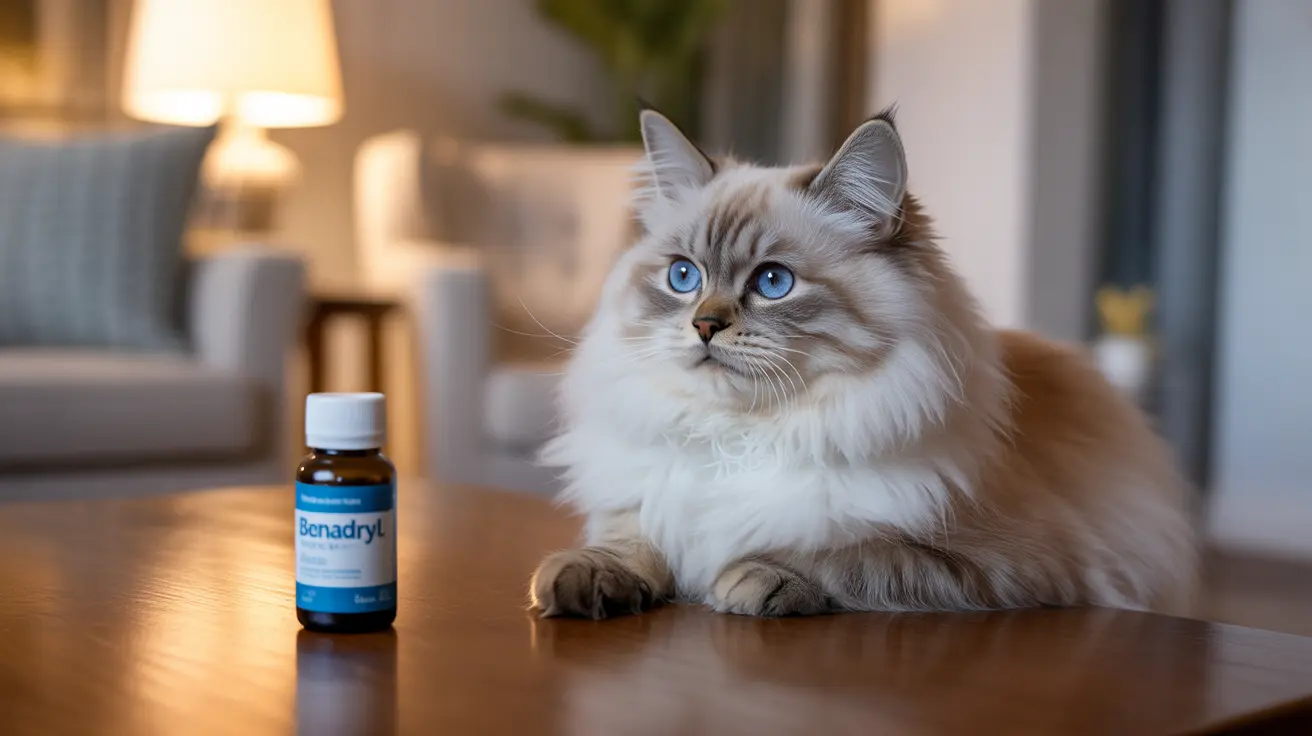Understanding Benadryl and Its Effects on Cats
Benadryl is an antihistamine commonly used to treat allergic reactions, motion sickness, and mild anxiety in cats. However, cats process medications differently than humans or dogs, making them particularly sensitive to antihistamines. What might be safe for humans can prove dangerous or even fatal for cats when improperly administered.
Potential Fatal Risks of Benadryl in Cats
Several factors can turn Benadryl from a helpful medication into a lethal threat for cats:
Overdose Dangers
Even small dosing errors can lead to severe complications or death. Cats are extremely sensitive to diphenhydramine, and their small body size means the margin for error is minimal. A dose that's too high can cause respiratory failure, cardiac problems, or severe central nervous system depression.
Pre-existing Health Conditions
Cats with heart disease, glaucoma, or respiratory issues face heightened risks when taking Benadryl. The medication can exacerbate these conditions, potentially leading to fatal complications.
Critical Warning Signs of Benadryl Toxicity
Watch for these potentially life-threatening symptoms:
- Severe lethargy or unconsciousness
- Difficulty breathing or rapid breathing
- Seizures or tremors
- Rapid heart rate or irregular heartbeat
- Extreme agitation or aggression
- Collapse
Safe Usage Guidelines and Prevention
To prevent tragic outcomes when using Benadryl:
- Never administer Benadryl without veterinary approval
- Use only preparations specifically recommended by your vet
- Measure doses precisely using proper tools
- Monitor your cat closely after administration
- Keep all medications securely stored away from pets
Emergency Response to Benadryl Overdose
If you suspect your cat has ingested too much Benadryl or is showing adverse reactions, immediate emergency veterinary care is crucial. Every minute counts in cases of antihistamine overdose.
Frequently Asked Questions
Can Benadryl overdose be fatal for cats, and what are the signs to watch for?
Yes, Benadryl overdose can be fatal for cats. Signs include severe lethargy, difficulty breathing, seizures, rapid heart rate, and collapse. Any suspected overdose requires immediate emergency veterinary care.
What is the safe Benadryl dosage for cats and how often can it be given?
The typical safe dosage is 1-2 mg per pound of body weight, given no more than every 8 hours. However, all dosing should be determined and supervised by a veterinarian based on the individual cat's needs and health status.
What should I do if my cat accidentally ingests Benadryl or shows toxicity symptoms?
Immediately contact your veterinarian or emergency animal hospital. Do not induce vomiting unless specifically instructed by a professional. Time is critical in overdose situations.
Why might Benadryl cause paradoxical excitement or severe reactions in some cats?
Cats can experience paradoxical reactions due to their unique metabolism and individual sensitivity to antihistamines. Some cats become agitated rather than sedated, and others may have severe adverse reactions due to genetic factors or underlying health conditions.
Are there specific health conditions or medications that make Benadryl dangerous for cats?
Yes, cats with heart disease, glaucoma, respiratory problems, high blood pressure, or those taking other medications face increased risks. Always inform your veterinarian of any existing conditions or medications before using Benadryl.
Conclusion
While Benadryl can be safely used in cats under proper veterinary supervision, its potential to cause severe harm or death cannot be overlooked. Never administer this medication without professional guidance, and always err on the side of caution when it comes to your cat's health. If you have concerns about using Benadryl, discuss alternative treatment options with your veterinarian.






